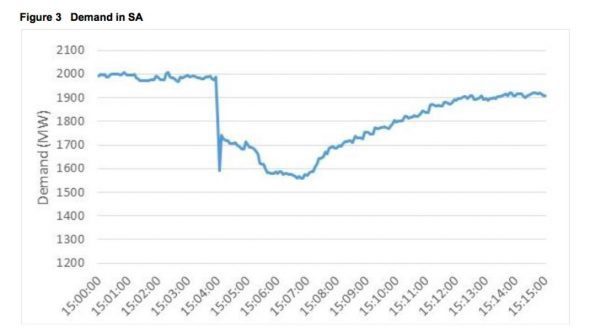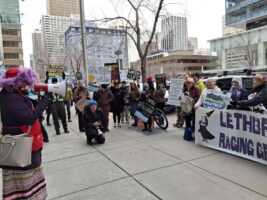The Australian Energy Market Operator has confirmed that the explosion and fire at the Torrens Island gas plant near Adelaide in early March, and the failure of the two biggest base-load gas generators nearly sent the South Australia grid into another “system black.”
The loss of the two principal baseload generators – Torrens and Pelican Point – to as yet unexplained reasons – made the system unstable for a period of 40 minutes. It appears to have been held together only by the states’s wind farms, and the inter-connector to Victoria.
AEMO, in a report published a week ago, says there are striking similarities between the “system black” event in September 28, and the events of March 3, when no blackouts actually occurred.
On March 3, the sudden loss of gas-fired generation (410MW in 1.5 seconds and a further 200MW within five minutes), was more dramatic than on September 28, and the Heywood interconnector carried a much higher load for a longer period of time without collapsing.
AEMO said the loss of one 130MW unit after the explosion and fire was understandable, but says it is at a loss to explain why another two units at Torrens tripped and why the 250MW Pelican Point power plant also tripped within 1.5 seconds.
But one thing it does know that adjustments to the “ride through” settings on the state’s wind farm fleet means that they were unaffected by the failures and the dramatic voltage swings that appeared to have taken the state’s “baseload” gas fleet out of action.
“All wind farms in SA successfully rode through a series of three transmission faults in short succession on 3 March, indicating the changes made to their protection system since 28 September 2016 have been successful,” AEMO noted.
It said that AEMO has not identified any sustained reduction in output from the wind farms as a consequence of the faults on the transmission system. It appears to confirm SEMO’s previous assessment that the changes would avoid a similar system black if the September 28 events were repeated.
Premier Jay Weatherill had no doubt what kept the lights on: “Wind farms kept the lights on in South Australia that day,” he told the ABC.
The event also had some other interesting impacts.
First was the loss of around 400MW of load, which an AEMO spokesman attributes to the “natural response” of modern electronic equipment and appliances such as air conditioners, pool pumps, fridges, fluorescent lights, etc that dropped out on low voltage.
Around 150MW of rooftop solar capacity was also lost, as the PV systems shut off in response to the voltage disturbance.
That caused an increase in demand, as that sudden blip upwards in the graph above illustrates. As the rooftop PV systems recovered and automatically re-connected, their output increased and reduced the demand.
“AEMO will develop better modelling of load and rooftop PV response to severe voltage disturbances, to fully understand the implications for power system security.”
The other interesting aspect is the performance of the interconnector, which reached well beyond its rated capacity and leaped from 495MW before the incident to peak at 963MW after the third unit at Torrens Island tripped and stopped generating.









